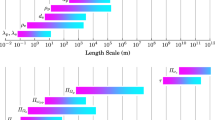Abstract
This instrument is designed to make measurements of the full three-dimensional distribution of suprathermal electrons and ions from solar wind plasma to low energy cosmic rays, with high sensitivity, wide dynamic range, good energy and angular resolution, and high time resolution. The primary scientific goals are to explore the suprathermal particle population between the solar wind and low energy cosmic rays, to study particle accleration and transport and wave-particle interactions, and to monitor particle input to and output from the Earth's magnetosphere.
Three arrays, each consisting of a pair of double-ended semi-conductor telescopes each with two or three closely sandwiched passivated ion implanted silicon detectors, measure electrons and ions above ∼20 keV. One side of each telescope is covered with a thin foil which absorbs ions below 400 keV, while on the other side the incoming <400 keV electrons are swept away by a magnet so electrons and ions are cleanly separated. Higher energy electrons (up to ∼1 MeV) and ions (up to 11 MeV) are identified by the two double-ended telescopes which have a third detector. The telescopes provide energy resolution of ΔE/E≈0.3 and angular resolution of 22.5°×36°, and full 4π steradian coverage in one spin (3 s).
Top-hat symmetrical spherical section electrostatic analyzers with microchannel plate detectors are used to measure ions and electrons from ∼3 eV to 30 keV. All these analyzers have either 180° or 360° fields of view in a plane, ΔE/E≈0.2, and angular resolution varying from 5.6° (near the ecliptic) to 22.5°. Full 4π steradian coverage can be obtained in one-half or one spin. A large and a small geometric factor analyzer measure ions over the wide flux range from quiet-time suprathermal levels to intense solar wind fluxes. Similarly two analyzers are used to cover the wide range of electron fluxes. Moments of the electron and ion distributions are computed on board.
In addition, a Fast Particle Correlator combines electron data from the high sensitivity electron analyzer with plasma wave data from the WAVE experiment (Bougeretet al., in this volume) to study wave-particle interactions on fast time scales. The large geometric factor electron analyzer has electrostatic deflectors to steer the field of view and follow the magnetic field to enhance the correlation measurements.
Similar content being viewed by others
References
Acuna, M.et al.: 1993, this volume.
Anderson, K. A.: 1981,J. Geophys. Res. 86, 4445.
Anderson, D. A., Lin, R. P., and Potter, D. W.: 1982,Space Sci. Rev. 32, 169.
Anderson, K. A., Lin, R. P., Martel, F., Lin, C. S., Parks, G. K., and Rème, H.: 1979,Geophys. Res. Letters 6, 401.
Armstrong, T. P., Chen, G., Sarris, E. T., and Krimigis, S.M.: 1977, in M. A. Shea it et al.Study of Travelling Interplanetary Phenomena, D. Reidel Publ. Co., Dordrecht, Holland, p. 367.
Asbridge, J. R., Bame, S. J., and Strong, I. B.: 1968,J. Geophys. Res. 73, 5777.
Barnes, C. W. and Simpson, J. A.: 1976,Astrophys. J. 210, 191.
Bougeret, J.-L.: 1993, this volume.
Carlson, C. W., Curtis, D. W., Paschmann, G., and Michael, W.: 1983,Adv. Space Res. 2(7), 67.
Ergun, R. E., Carlson, C. W., McFadden, J. P., Clemmons, J. H., and Boehm, M. H.: 1991,J. Geophys. Res. 96, 225.
Feldman, W. C., Asbridge, J. R., Bame, S. J., and Montgomery, M. D.: 1973,J. Geophys. Res. 78, 3697.
Filbert, P. C. and Kellog, P. J.: 1979,J. Geophys. Res. 84, 1369.
Frank, L. A.: 1969,J. Geophys. Res. 75, 1269.
Gloeckler, G., Hovestadt, D., and Fisk, L.A.: 1979,Astrophys. J. 230, L191.
Gosling, J. T., Asbridge, J. R., Bame, S. J., Feldman, W. C., Paschmann, G., and Sckopke, N.: 1980,J. Geophys. Res. 85, 744.
Gough, M. P.: 1985,IEEE Trans. Geosci. Remote Sens. GE-23, 305.
Lin, R. P.: 1974,Space Sci. Rev. 16, 189.
Lin, R. P.: 1985,Solar Phys. 100, 537.
Lin, R. P. and Hudson, H. S.: 1971,Solar Phys. 17, 412.
Lin, R. P. and Hudson, H. S.: 1976,Solar Phys. 50, 153.
Lin, R. P. and Kahler, S. W.: 1992,J. Geophys. Res. 97, 8203.
Lin, R. P., Levendahl, W. K., Lotko, W., Gurnett, D. A., and Scarf, F. L.: 1986,Astrophys. J. 308, 954.
Lin, R. P., Potter, D. W., Gurnett, D. A., and Scarf, F. L.: 1981,Astrophys. J. 251, 364.
Paschmann, G., Sckopke, N., Asbridge, J. R., Bame, S. J., and Gosling, J. T.: 1980,J. Geophys. Res. 85, 4689.
Potter, D. W., Lin, R. P., and Anderson, K. A.: 1980,Astrophys. J. 236, L97.
Sarris, E. T., Krimigis, S. M., Bostrom, C. O., and Armstrong, T. P.: 1978,J. Geophys. Res. 83, 4289.
Author information
Authors and Affiliations
Rights and permissions
About this article
Cite this article
Lin, R.P., Anderson, K.A., Ashford, S. et al. A three-dimensional plasma and energetic particle investigation for the wind spacecraft. Space Sci Rev 71, 125–153 (1995). https://doi.org/10.1007/BF00751328
Received:
Issue Date:
DOI: https://doi.org/10.1007/BF00751328




